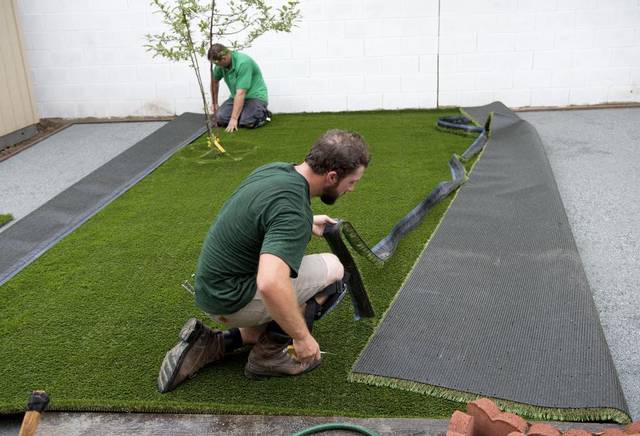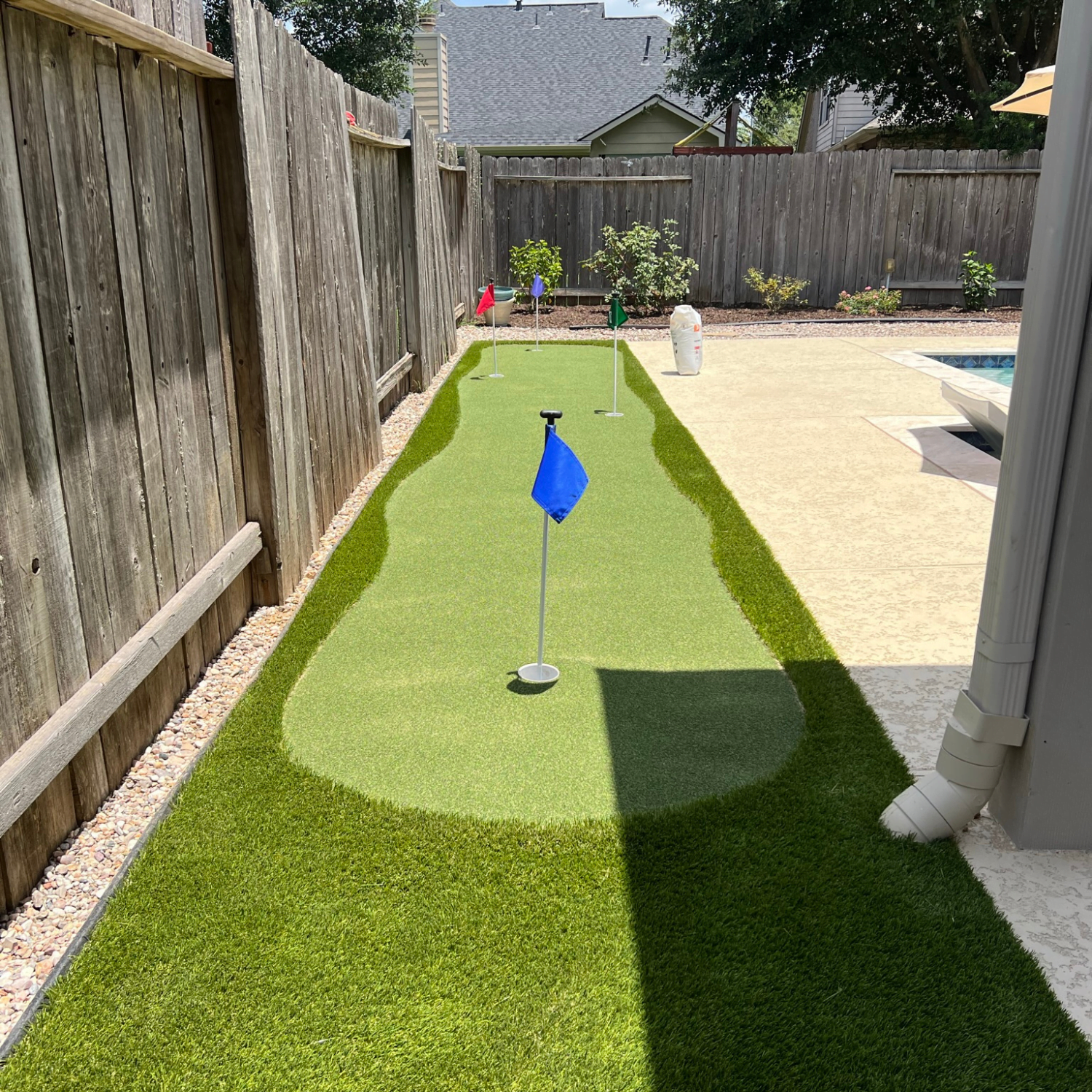Artificial Grass Canoga Park Solutions for a Green and Long-Lasting Landscape
Artificial Grass Canoga Park Solutions for a Green and Long-Lasting Landscape
Blog Article
Leading Reasons to Consider Artificial Grass for a Low-Maintenance and lavish Yard
As home owners increasingly look for lasting options for outside rooms, fabricated grass provides an appealing choice to standard grass. The benefits expand past mere aesthetic appeals and sustainability; exploring the multifaceted ramifications of artificial lawn discloses a comprehensive approach to backyard monitoring that advantages much deeper factor to consider.
Year-Round Plant
Among the most considerable benefits of fabricated yard is its capacity to supply year-round plant, no matter climate problems. House owners typically encounter difficulties in maintaining a vibrant yard due to seasonal adjustments, dry spells, or hefty rains. Synthetic turf gets rid of these problems, guaranteeing a continually rich appearance throughout the year.
This artificial option is crafted to hold up against diverse climate scenarios, from scorching summertime warmth to cold winter temperature levels. Unlike all-natural turf, which may brown or come to be irregular throughout extreme conditions, synthetic grass keeps its lively shade and structure, enhancing the aesthetic appeal of any type of landscape.
Furthermore, artificial lawn is immune to parasites and diseases that generally influence all-natural yards. This durability adds to its long-lasting beauty, as there is no demand for chemical treatments or fertilizers that can be hazardous to the setting. Moreover, house owners can appreciate the aesthetic benefits of a well-kept grass without the cyclical obstacles positioned by all-natural turf treatment (artificial grass).
Reduced Maintenance Efforts
Synthetic grass substantially lowers maintenance efforts, enabling home owners to delight in an immaculate grass without the time-consuming jobs connected with all-natural yard care. One of the most notable advantages of synthetic lawn is the removal of regular mowing. Without requirement for a lawnmower, property owners save both time and the price of maintenance related to this tools.

Cleansing artificial lawn is straightforward; an easy rinse with a hose or the occasional cleaning to remove debris is normally sufficient - artificial grass installation. This ease of treatment permits homeowners to spend even more time appreciating their exterior spaces as opposed to laboring over them. In summary, the lowered maintenance efforts connected with man-made turf make it an appealing choice for those seeking an attractive, hassle-free yard
Water Conservation Advantages
The substantial decrease in maintenance initiatives related to man-made lawn prolongs to water conservation, making it an ecologically friendly choice for house owners. Typical grass call for significant quantities of water to remain vibrant and lush, typically causing too much water use, specifically in dry regions. In contrast, synthetic turf gets rid of the need for regular watering, significantly minimizing the general water usage in your yard.
By going with artificial turf, house owners can save thousands of gallons of water yearly. This change not only benefits private households yet likewise contributes to broader ecological efforts targeted at reducing water waste. In locations experiencing water shortage, view it now the fostering of artificial lawn can play a significant function in reducing the impacts of dry spell and ensuring that beneficial water resources are utilized extra effectively.
Furthermore, the installment of synthetic lawn can help reduced municipal water need, benefiting the area all at once. With growing recognition of environmental concerns, choosing fabricated turf acts as a positive action towards sustainable landscaping, assisting to preserve natural water resources while preserving a visually pleasing outdoor area (artificial grass installation). In recap, synthetic turf presents a compelling remedy for water conservation, lining up ecological responsibility with modern-day landscape design requirements

Insect and Allergy Reduction
A significant advantage of installing artificial lawn is its capacity to reduce bugs and allergens in outdoor rooms. Standard lawn yards often act as reproducing grounds for insects such as insects, ticks, and ants, which can create pain and health risks for family members and pet dogs. In contrast, synthetic lawn eliminates the natural product that draws in these parasites, consequently considerably lowering their populaces in your lawn.
In addition, all-natural grass can nurture mold, plant pollen, and other irritants, which can activate allergies and respiratory system issues for delicate individuals. Artificial grass provides a cleaner atmosphere, reducing the possibility for allergenic reactions. Unlike all-natural turf, synthetic grass does not produce pollen, making it an exceptional option for allergy victims seeking to appreciate their outdoor areas without the threat of flare-ups.
Furthermore, the lack of soil in synthetic grass indicates there is much less dirt and dirt, additional minimizing air-borne allergens. This low-maintenance alternative not only improves the visual appeal of your backyard however additionally promotes a healthier exterior environment, enabling households to appreciate their lawns without the continuous fear of insects and irritants. Hence, artificial turf is a critical choice for those focusing on convenience and health in their outdoor living areas.
Long-Term Price Financial Savings
Spending in artificial turf can lead to considerable lasting cost savings for homeowners. Artificial grass gets rid of the need for regular lawn upkeep expenses, such as mowing, fertilizing, and watering.
Furthermore, the longevity of artificial grass additionally improves its cost-effectiveness. A lot of top notch man-made turf products can last 15 pop over to this web-site to 25 years with marginal upkeep, minimizing the requirement for replacement or extensive repairs. On the other hand, natural grass may call for regular reseeding and normal treatment, which can rapidly build up in costs.
Utility cost savings are another critical aspect. Property owners can expect to see lower water costs, as artificial grass does not require watering. Furthermore, the reduction in grass care solutions can original site liberate important time and sources, permitting property owners to allocate their budget plans elsewhere.
Final Thought
In summary, artificial turf provides countless benefits for home owners looking for a low-maintenance and vivid landscape. Ultimately, the long-lasting expense financial savings connected with fabricated turf solidify its status as a practical and sustainable solution for enhancing outdoor spaces.
Synthetic lawn dramatically lowers upkeep initiatives, permitting home owners to take pleasure in a pristine grass without the taxing jobs linked with all-natural turf treatment.The substantial reduction in maintenance efforts linked with fabricated lawn expands to water preservation, making it an ecologically friendly option for homeowners. In comparison, synthetic grass eliminates the demand for routine watering, substantially lowering the general water consumption in your yard.
In areas experiencing water deficiency, the adoption of synthetic lawn can play a substantial function in mitigating the results of dry spell and guaranteeing that valuable water resources are used much more successfully.
With expanding awareness of ecological issues, choosing synthetic yard serves as a positive action towards lasting landscaping, aiding to protect all-natural water sources while keeping a visually pleasing exterior area.
Report this page